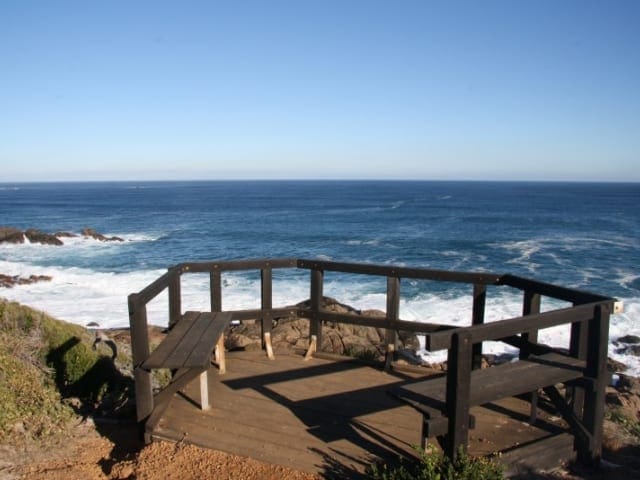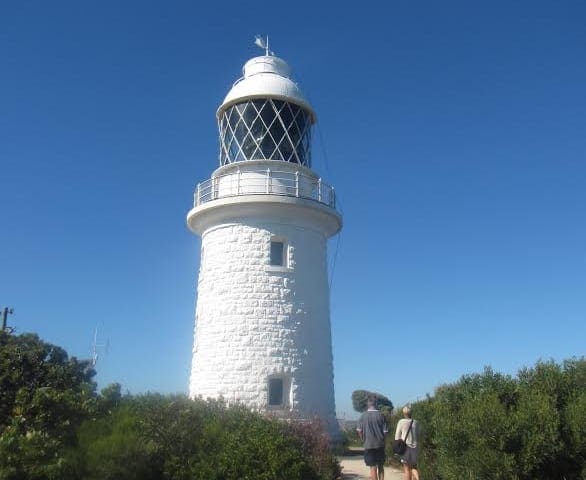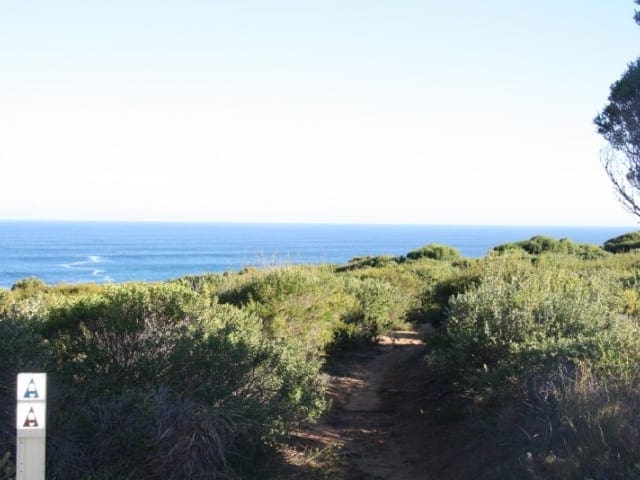Hike at a Glance
Max elevation: 25m
Min elevation: 5m
Total Ascent: 109m
Hike overview
The Meelup Reserve Trail is a stunning 7-kilometre coastal walk in Meelup Regional Park, following the northern shores of Geographe Bay. Winding through a landscape of pristine bushland, rugged granite formations, and secluded white sandy bays, this trail offers a peaceful yet engaging hiking experience. The path is mostly a mix of limestone and natural terrain, making it a moderately easy walk suited to a wide range of hikers.
Starting near Hurford Street in Old Dunsborough, the trail meanders past a series of sheltered coves and well-known beaches, each with its own charm. Along the way, you'll pass Curtis Bay, Castle Rock, and Castle Bay before reaching the iconic Meelup Beach, a favourite among visitors for its calm turquoise waters. Continuing north, the track takes you past Point Picquet before finishing at Eagle Bay. The route can be walked in either direction, offering different perspectives of the coastline.
Many of the beaches along the trail are perfect for swimming, with clear, shallow waters that make them ideal for a refreshing dip. Small reefs and rocky outcrops also provide great snorkelling opportunities. In spring, the surrounding bushland bursts into colour with wildflowers, and native wildlife is often spotted along the way. From September to December, the trail’s elevated vantage points become excellent spots for whale watching, as humpback and southern right whales migrate along the coast.
While the foreshore at Meelup Beach is wheelchair accessible, the rest of the trail is a narrow dirt track with uneven and rocky sections, making it unsuitable for all abilities. However, for those able to explore it, the Meelup Reserve Trail offers a perfect blend of coastal beauty, sheltered swimming spots, and rich natural surroundings, making it one of the most rewarding walks in the Margaret River region.
Gallery
Got some great shots from this hike? Upload your photos here to inspire others and show off the beauty of the trail!
Click to view form >>
Submitting your photos doesn’t mean you lose ownership. You can be credited for your contributions, and you can request removal at any time.
Content use
Please don’t copy GPX files or content from this site to AllTrails or other platforms. Each trail has been personally mapped, documented, and refined to support Australia’s bushwalking and hiking community. While some details come from land managers, every listing reflects significant personal effort. This is a free, community-driven initiative—your respect helps keep it that way.
Walk map and GPX file
Max elevation: 25 m
Min elevation: 5 m
Total climbing: 109 m
Total descent: -105 m
Getting there
Getting to the trailhead: Meelup Regional Park.
The Meelup Reserve Trail begins near Hurford Street in Old Dunsborough, just a short drive from the town centre. If you’re travelling from Busselton or beyond, follow Caves Road south before turning onto Cape Naturaliste Road, which leads directly into Dunsborough. From there, take Gifford Road towards the coast, then turn onto Hurford Street, where you’ll find parking near the trailhead. The trail starts about two kilometres from central Dunsborough, which itself is approximately 251 kilometres—or a 2.5- to 3-hour drive—from Perth.
Public transport options are available, with buses running from Perth to Dunsborough in around 4.5 hours. For schedules and fares, visit Transwa. While the full trail offers a rewarding experience, there are several sealed access points at Meelup Beach, Point Picquet, and Eagle Bay, allowing walkers to join the track at different locations or opt for a shorter route if preferred. For those staying locally, the trail is easily accessible on foot or by bicycle, making for a relaxed and scenic approach before setting out on the walk.
Closest towns to this walk: Busselton, Dunsborough, Eagle Bay, Margaret River, Yallingup
About the region
Meelup Regional Park sits along an 11.5-kilometre stretch of coastline between Dunsborough and Bunker Bay, about 250 kilometres south of Perth in Western Australia. This rugged yet inviting landscape is part of Wadandi Country, home to the Salt Water People, who have cared for the land for thousands of years. The name “Meelup” means “Place of the Moon Rising,” a reference to the rare and mesmerising sight of the full moon appearing to rise directly from the sea on certain nights of the year. If you’re in the area when this happens, it’s well worth taking a moment to witness.
Unlike much of Western Australia’s coastline, which faces westward into the open ocean, Meelup’s northeast-facing shores are sheltered, allowing tall trees and dense vegetation to grow right to the water’s edge. The park is known for its scenic beaches, secluded coves, and elevated whale-watching lookouts, making it a great destination for anyone who enjoys walking trails, coastal hikes, and outdoor adventures. From September to December, migrating humpback and southern right whales can often be spotted offshore, a breathtaking reward for those exploring the park’s bushwalks.
Springtime brings a burst of colour to the landscape, with wildflowers carpeting the trails and surrounding bushland. A stroll along the coastal track towards Castle Rock or Eagle Bay reveals an impressive variety of native flora, including delicate Spider, Donkey, Enamel, Mustard, and Jug Orchids. The rare Dunsborough Orchid can also be found here, nestled among Pea Bushes, Acacias (Wattles), Hakeas, and Hibbertia (Buttercup), making this a rewarding walk for keen botanists and nature lovers alike.
Meelup Beach itself is a favourite picnic spot, with lawned areas, barbecues, and shady trees overlooking the calm, inviting water. Public toilets and showers are available, making it a convenient base for a day out. Whether you’re looking for a short, easy walk, a longer bushwalk, or a scenic coastal hike, Meelup Regional Park offers some of the best trails in the Margaret River region.
Similar walks nearby
Looking for more walks in or near Meelup Regional Park? Try these trails with a similar difficulty grade.
Track grade
Grade 3 (Moderate) - Walks for Most Fitness Levels: Grade 3 on the AWTGS represents moderate walking tracks. These are ideal for walkers with some fitness who are comfortable with some hills and uneven terrain. While suitable for most ages, some bushwalking experience is recommended to ensure a safe and enjoyable experience. Tracks may have short, steep hill sections, a rough surface, and many steps. The total distance of a Grade 3 walk can be up to 20 kilometers.
Explore safe
Plan ahead and hike safely! Carry enough water, pack layers for changing conditions, and bring safety gear like a torch, PLB, and reliable communication device. Check official sources for trail updates, closures, and access requirements, and review local weather and bushfire advice. Most importantly, share your plans with someone before you go. Being prepared makes for a safer and more enjoyable hike! Stay Safe, Explore More, and Always #ExploreSafe.
Packing checklists
What you carry in your pack depends on factors like weather, terrain, and your adventure type. Not sure what to bring? My free planning, food, and packing checklists are a great starting point, covering day hikes, overnight trips, and multi-day adventures. Use them to customise your kit and always prioritise safety.
Let someone know
Before heading out, take a moment to fill out your trip intentions form. It’s a quick way to share your hike details with family or friends. If something goes wrong, they can notify emergency services, ensuring a faster response and peace of mind. Stay safe and enjoy your adventure
Suggest an edit
Spotted a change on this trail? Maybe there are new features, the route has shifted, or the trail is permanently closed. Whatever the update, I’d love your input. Your feedback helps fellow hikers stay informed and ensures that our trail info stays fresh and reliable.
Acknowledgement of Country
Trail Hiking Australia acknowledges the Traditional Owners of the lands on which we hike and pay respects to their Elders, past and present, and we acknowledge the First Nations people of other communities who may be here today.






